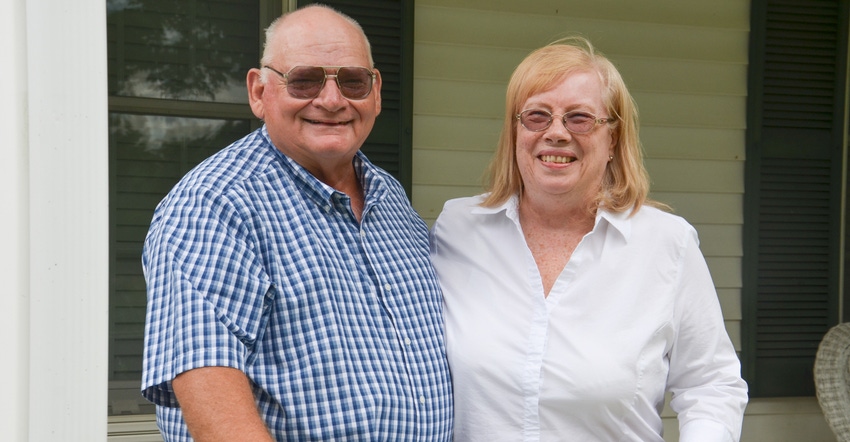
Jon Roberts and his family farm land that’s located in a unique position in Indiana. Part of it drains toward the Great Lakes. The rest drains toward the Mississippi River. A continental divide in northern Indiana runs through the farm. How Roberts cares for his land affects both the Great Lakes and the Gulf of Mexico.
Roberts takes the responsibility seriously, both by how he farms and what he does to promote soil conservation and water quality in the community. “We’ve no-tilled here since the mid-1980s,” he explains. “We’ve used cover crops for the past several years, and we use rotational grazing to best use pastureland for our beef cattle.”
Roberts is active within the Kosciusko County Soil and Water Conservation District, serving as a supervisor since 1992 and an associate supervisor before joining the board. His combined efforts to protect and promote efficient use of natural resources earned him recognition as the Indiana Association of Soil and Water Conservation Districts’ Supervisor of the Year in 2018. The award is sponsored by Indiana Prairie Farmer.
Conservation on the land
Today, Roberts and his wife, Betty Jo, with their son Matt and his family, raise corn, soybeans, wheat and hay on their rolling farm. They’ve raised non-GMO corn for three years, earning premiums, and intend to move into non-GMO soybeans in 2019.
Cover crops entered the picture more than a decade ago, Roberts says. “We typically hire cereal rye flown into standing corn, and then broadcast wheat as a cover after soybeans,” he says. “We’ve had success no-tilling soybeans after a rye cover crop and no-tilling corn with a Case IH 12-row planter behind a wheat cover.”
Roberts notes that they’ve used crimson clover as a cover crop where they’ve grown wheat as a cash crop. Recently, they also used 14-way cover crop mixes after wheat to add diversity and improve soil health.
The opportunity to seed cover crops earlier after wheat harvest opens a window to seed a wider variety of species, Roberts explains.
“We also don’t have to worry about potential herbicide carryover that might affect certain cover crop species when we follow wheat,” he adds.
Spread the word
Roberts says he’s blessed with not only land in a unique location, but also a community that needs to hear the conservation message and a soil and water conservation district that rises to the challenge of delivering that message. Kosciusko County is home to dozens of lakes, with many people living around them. The Kosciusko County SWCD actively promotes education and action.
“We’ve assisted with youth education through a rafting program, including education on water quality and water testing,” Roberts says. “The district owns rafts, and today, the program focuses on elementary school kids.”
The SWCD promotes education with adults as well, including offering environmental classes through the Wawasee Lake Foundation. The district also holds a tree sale every spring, offering bare-root seedlings for planting.
“We’ve been involved in a number of watershed projects over the years, too,” Roberts says. “Water quality is a big concern in our area.”
About the Author(s)
You May Also Like




